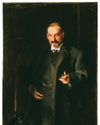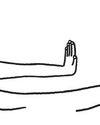
“Literature bores me, especially great literature,” the narrator of one of John Berryman’s “Dream Songs” says. George Eliot sometimes bores me, especially the George Eliot draped in greatness. Think of the extremities of nineteenth-century fiction: labile Lermontov; crazy, visionary Melville; nasty, world-hating Flaubert; mystic moorbound Brontës; fanatical, trembling Dostoyevsky; explosive Hamsun. There’s enough wildness to destroy the myth of that stable Victorian portal “classic realism.” It was not classic—certainly not then—and not always particularly “real.” Instead, it was a storm of madness, extravagant allegory, tyrannical ambition, violent religiosity, violent atheism. Amid this tableau, at the calm median of the century’s religious belief and its unbelief, is wise, generous George Eliot: the saintly oracle consulted and visited by young Henry James and many other important admirers (Wagner, Emerson, Turgenev), sitting on her moral throne like a more interesting Queen Victoria (the Queen was, in fact, one of her eager readers), in her distinguished house in Northwest London, named, fittingly, the Priory.
This story is from the September 11, 2023 edition of The New Yorker.
Start your 7-day Magzter GOLD free trial to access thousands of curated premium stories, and 9,000+ magazines and newspapers.
Already a subscriber ? Sign In
This story is from the September 11, 2023 edition of The New Yorker.
Start your 7-day Magzter GOLD free trial to access thousands of curated premium stories, and 9,000+ magazines and newspapers.
Already a subscriber? Sign In

BADDIE ISSUES
\"Wicked\" and \"Gladiator II.\"

LET'S MAKE A DEAL
\"Death Becomes Her\" and \"Burnout Paradise.\"

ANTI HEROES
\"The Franchise,\" on HBO.

FELLOW-TRAVELLERS
The surprisingly sunny origins of the Frankfurt School.

NOW YOU SEE ME
John Singer Sargent's strange, slippery portraits of an art dealer's family.

PARIS FRIEND - SHUANG XUETAO
Xiaoguo had a terror of thirst, so he kept a glass of water on the table beside his hospital bed. As soon as it was empty, he asked me to refill it. I wanted to warn him that this was unhealthy - guzzling water all night long puts pressure on the kidneys, and pissing that much couldn't be good for his injury. He was tall, though, so I decided his insides could probably cope.

WILD SIDE
Is Lake Tahoe's bear boom getting out of hand?

GETTING A GRIP
Robots learn to use their hands.

WITHHOLDING SEX FROM MY WIFE
In the wake of [the] election, progressive women, who are outraged over Donald Trump's victory at the ballot box, have taken to social media with public, vengeful vows of chastity. - The Free Press.

DEADLINE EXTENSION
Old age, reborn.